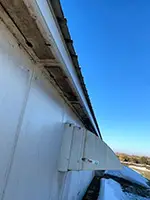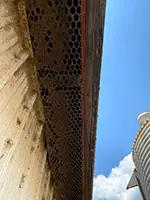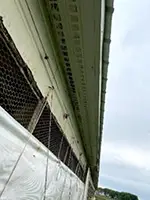
5 tips for preparing for and managing spring ventilation
 1. Make sure fans and shutters are clean and operational. All fans need to be:
1. Make sure fans and shutters are clean and operational. All fans need to be:
- Turned on – at the fan and at the controller
- Insulation removed
- Checked to make sure motor is operational
- Grease belts and pulleys
- Clean fans and shutters to allow for adequate airflow at minimum ventilation. Dirty fans and shutters can restrict air flow by 40%.
2. Manage inlets.
- Clean soffits to provide adequate airflow at minimum ventilation.
- Open any closed soffits.
- Recalibrate inlets to consistent distance and adjusted to a maintain an air speed of 800 to 1,000 feet per minute.


3. Check your controller.
- In the spring and summertime, decrease the bandwidth of fans to 1.0 to 1.5 degrees F to increase airflow.
- Make sure that the heater offset is at least 2.0 degrees F below the next fan stage. This will avoid overheating the barn and wasting propane.
- Read the pigs; some barns require a drop in setpoint to achieve a thermoneutral environment. If the pigs are lying spread out and appear hot, do not be afraid to adjust the setpoint incrementally as needed.
4. Maintain your heaters.
In the spring, the heaters do not run as much, which leads to pilot flames going out, thermostat malfunctions, thermocouples failing and other mechanical issues. We often see cold nights long into April, and not having functional heaters causes sharp temperature dips that stress the pigs and impact performance.
 5. Pay attention to your curtains.
5. Pay attention to your curtains.
Barn curtains run more in the spring and fall than any other time. In the spring, these curtains have been up all winter and are prone to motor malfunctions, cable breaks, and actuator issues. Make sure on a nice, warm day the curtains are run up and down a few times to make sure everything is working properly.
| Category: |
Business management Facility design Heat stress Swine Performance |

